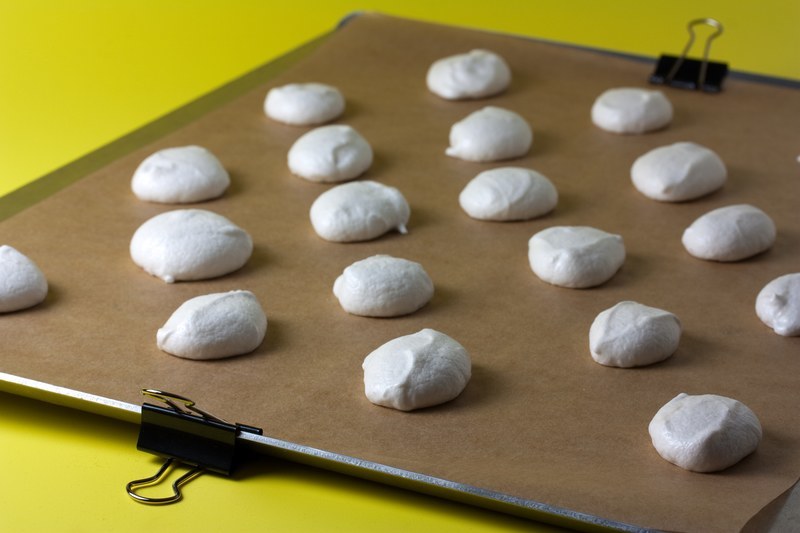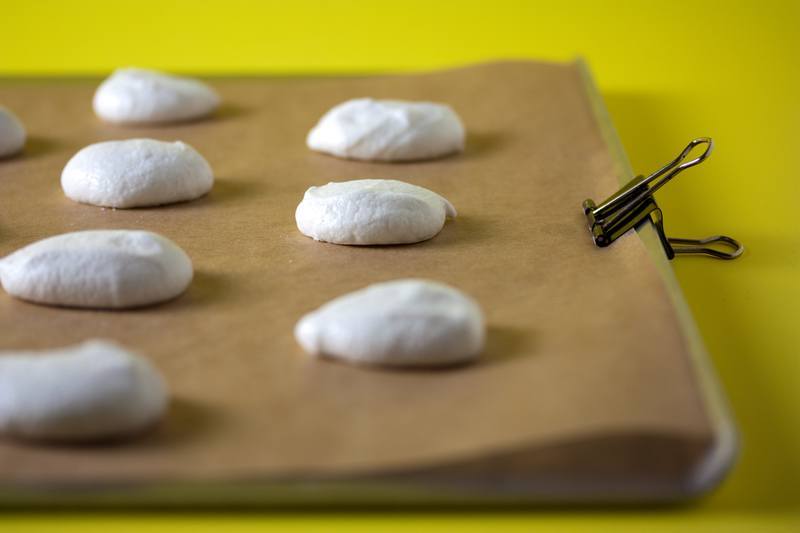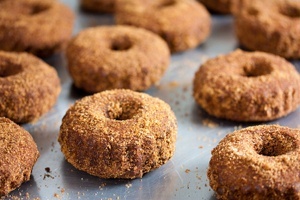Veganbaking.net
Vegan Baking Articles
Vegan Baking Guides
Vegan Cookie Baking Tips for Easy Non-stick Cookies
Vegan Cookie Baking Tips for Easy Non-stick Cookies
0
Comments (8)

I've been through it all when it comes to searching for convenient ways to bake cookies with even, consistent results and unburned bottoms. When I first started baking vegan cookies I would get frustrated when they would often affix themselves to the baking sheet with an unknown force that would rival Superglue. Rather than marketing this as CookieGlue and becoming a millionaire I decided to find ways to make cookie baking as easy and reliable as possible. It's all about using the right tools for the job.
When I first started my vegan baking journey back in '99 I found that AirBake cookie sheets work well to inhibit burned cookie bottoms due to their excellent even heat transfer. AirBake cookware consists of thin aluminum sheets sandwiched together with an air cavity between them. This allows extremely consistent baking because the sheets heat more evenly. The layer of air also insulates slightly so the bottom of the cookies don't get as hot as they would on a thin steel baking sheet. The AirBake sheets didn't solve my issues with cookies sticking to the sheets until I discovered Silpat silicone baking mats. Silicone baking mats are silicone sheets with a fiberglass mesh sandwiched between them to enhance durability. Most food-grade silicone can withstand temperatures up to 400F (204C) to 500F (260C) which makes it great for non-stick bakeware. The downside is that the mats are expensive, need washing and sometimes you want a little bit of crisp on the cookie bottoms. The silicone mats slightly insulate the cookie bottoms so while they don't stick, they also don't develop crisp on the bottom which is a slight drawback.
Find Cookie recipes on Veganbaking.net
4 Tips for Convenient Non-stick Cookie Baking
1) Even heat transfer is key to unburned cookies.
I use Vollrath cookie sheets for this reason because they consist of a thick piece of aluminum that transfers heat uniformly. If you don't have access to Vollrath sheets I recommend something consisting of thick aluminum for optimum, even heat transfer.2) To eliminate issues with cookies sticking to the sheet I recommend using baking parchment paper.
This paper has been coated in silicone which makes it act similarly to a silicone baking mat. Since it's just thin paper, cookie bottoms bake to a crisp and cleanup is effortless. Baking parchment paper comes in a roll it can sometimes curl up just as you're about to arrange the cookies on the sheet. This is particularly problematic when working with light items such as vegan meringue cookies. Placing a binder clip on each end of the sheet makes the parchment paper stay put. You can even leave them on while the cookies go into the oven.3) Accurate temperature is extremely important when baking cookies.
Are you going to rely on that shady thermometer built into your oven that hasn't been calibrated since 1989? Get a second opinion and use a liquid-based thermometer.Thermometers filled with liquid are more reliable over time than ones that use metal coils because the liquid doesn't wear out due to repeated heat exposure like the coils do. This will ensure that 350F (177C) is really 350F (177C) and not 370F (188C). This can make or break your cookies.4) Rotate the cookie sheet or sheets 180 degrees halfway through the baking duration.
Every oven has hot spots and cool spots. Rotating your cookie sheets ensures that they will all have about the same exposure to the heat in your oven. When baking with multiple sheets I recommend the additional step of switching the cookie sheets on the racks for optimum heat exposure.Following these simple steps will soon become second nature and will vastly improve the outcome of your baking adventures. Have any other cookie backing tips? Share them below!







